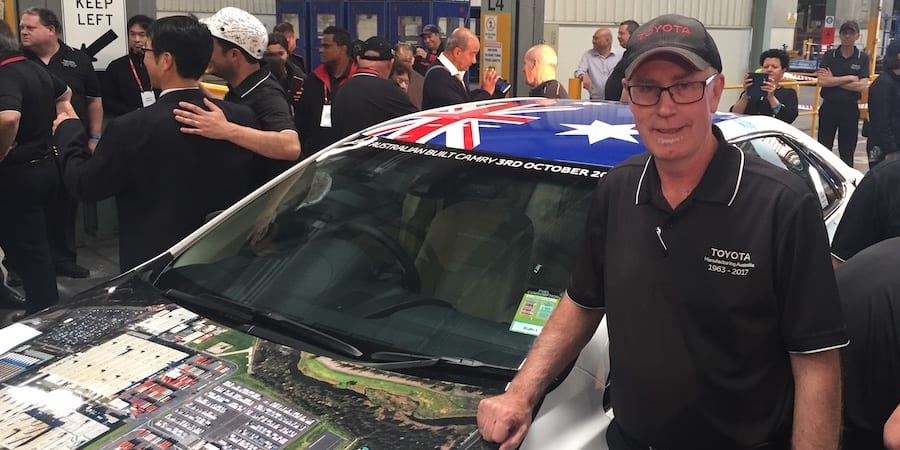
Don’t try to copy Toyota, understand it instead
FEATURE – Based on his direct decades-long experience at Toyota, the author explains what it takes to establish problem-finding and a kaizen culture in new environments.
Words: Nate Furuta
Many executives have chased the Toyota model of success. You may be one whose organization has tried to replicate the Toyota Production System (TPS) and methods, such as just-in-time or jidoka. You probably found it difficult to achieve success, or when you did make improvements, to sustain success.
There is a tendency to try and emulate TPS, rather than understand the thinking that inspired Toyota executives and workforces for decades. The basic thinking is simple: executives cannot solve a problem if they cannot find the problem. Just like a mistake-proofing system on a plant floor that surfaces problems, executives need tools and methods to surface problems. Because problems are often large and complex, it’s necessary to connect the specific problems identified with their underlying causes throughout your organization. To do that, everyone in your organization has to be inspired to find problems.
Toyota became successful because its executives were determined to create a culture dedicated to finding Toyota’s problems, then aligning solutions to those problems with Toyota’s vision. TPS is the culmination of many of those solutions. You and your organization must learn to find your problems and develop solutions that align with your vision. Toyota’s tools and techniques may be part of that solution, or they may not, and that depends on the problems you find.
“No problem, no kaizen” has become a catchphrase to promote problem solving, yet the casualness with which it is thrown about belies its importance. In fact, how Toyota lives that phrase – with relentless problem-finding and problem-solving attitude aligned with a shared vision – is the key to Toyota’s basic thinking and success.
Many organizations have failed to sustain success because they never realized their problems or they uncovered their key problems too late to remain competitive.
Bringing attention to problems sometimes seems to go against human nature. Too often people prefer to ignore, hide, or work around problems, and in many cultures pointing out your own problems brings shame and disgrace. To instill a problem-finding mindset in which you and your employees are dedicated to surfacing and highlighting problems, you need to change culture, and to change culture you need to change behaviors. At Toyota it was necessary to change behaviors for problem finding and problem solving to flourish. And it required a pragmatic, grounded approach – there was no magic. Toyota’s problem-finding, kaizen culture was systematically developed and it took decades to articulate to people outside of Toyota. It took great effort to make it stick even within Toyota.
My newly-published book Welcome Problems, Find Success: Building Toyota Cultures Around the World describes the kaizen culture within Toyota that drove its success, and the relentless search for problems that emanated from that culture. You will learn about systems and techniques they successfully used to find significant problems, and to develop and sustain kaizen cultures at new global operations as they were developing. This book will help you to:
- Establish systems that promote problem finding and problem solving from the top down.
- Break complex corporate problems into more graspable, addressable smaller problems.
- Create problems for your organization in order to maintain a continuous problem-finding culture.
- Embed systems that take problem finding from conscious decisions to personal habit.
Finding problems is too often considered a means only to address production issues – defects, delays, inefficiency, injuries. It does do that. But Toyota’s problem-finding philosophies and kaizen culture are even more important for senior leadership. They help executives locate problems that can slowly build, multiply, and destroy an organization. My book is for corporate management – senior executives, vice presidents, directors, plant man- agers – and for any function within a company, from accounting to R&D. As a manager, you are key to your company adopting a problem-finding mind set and a kaizen culture.
During my 37 years with Toyota and three years with Toyoda Boshoku, I was presented unique management challenges. With every challenge, I had to identify problems that could prevent Toyota from achieving its vision. I had to establish problem-finding philosophies and build kaizen culture in new environments for Toyota – North America and Europe.
There is a good reason why Toyota sent me, a human-resources executive, to spearhead overseas ventures. Toyota had never assigned an HR executive to such a role, but the company recognized that success in new lands would rely on leadership and team members willing to find problems in these new locations. We did not expect this to come naturally. We needed to change people’s behaviors.
There is a misperception that everyone at Toyota “gets it,” that we walked into our roles, front-line assembly worker or vice president, and were automatically assimilated into the Toyota culture and able to grasp Toyota philosophies, concepts, tools, and techniques. Nothing could be further from the truth. Everyone within Toyota had to work to develop and sustain a problem-finding/kaizen mind, and it was management’s role to make that happen and provide the coaching, mentoring, motivation, and systems to further that development.
Read about Nate Furuta's outstanding experience exporting Toyota cultures to environments as diverse as NUMMI and the company's European operations.



THE AUTHOR
Nate Furuta is author of Welcome Problems, Find Success - Creating Toyota Cultures Around the World. He has 38 years of experience working for Toyota, helping the organization establish some of its most challenging ventures around the world.
Read more


CASE STUDY – UK law firm Weightmans has transformed its new legal case intake process using the Lean Transformation Framework, revolutionizing both operations and people development.


INTERVIEW – From hospitals to start-ups, lean principles have been applied far beyond their origins at Toyota. This article discusses how lean can be applied to learning – specifically, how we can apply lean learning to learning lean.


PROFILE – What does one learn from working for Toyota over 40 years? This Australian leader has developed a unique holistic view, and a strong set of technical and social skills.


FEATURE – Because each lean transformation is unique, we can't expect an off-the-shelf solution to work. The author discusses multi-dimensional transformations and how we can be flexible but also structured.

